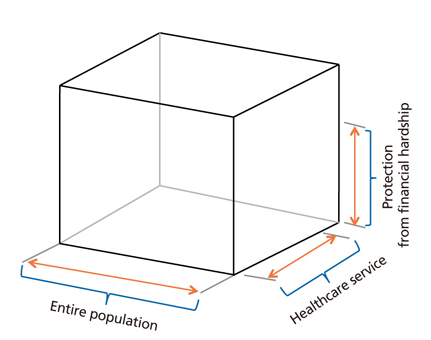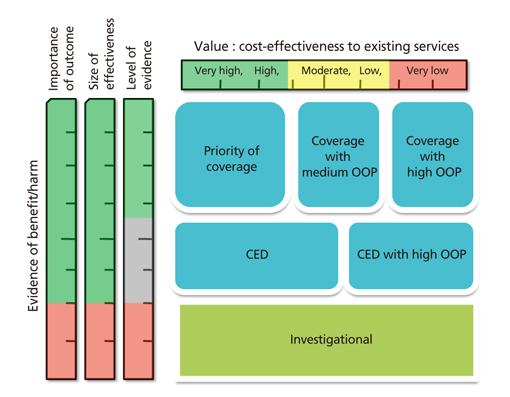J Korean Med Assoc.
2019 Apr;62(4):231-237. 10.5124/jkma.2019.62.4.231.
Essential health care
- Affiliations
-
- 1Health Insurance Review & Assessment Service, Wonju, Korea. lsmlight@hira.or.kr
- KMID: 2442740
- DOI: http://doi.org/10.5124/jkma.2019.62.4.231
Abstract
- The term "essential health care" is used as both an absolute concept and a relative concept. In countries with a high level of economic development, the implications of the relative concept of essential health care are generally more important, as the essential medical services included within the absolute concept are usually covered. The definition of essential health technologies as those that should be prioritized in public healthcare from a socioeconomic point of view is crucial for the process of in a timely manner. These determinations should be based on scientifically rigorous, comprehensive, and critical evaluations, including systematic reviews of the literature, and decision-making should proceed through a process of based on medical and socio-economic values. These decision-making processes should be transparent and consistent. In South Korea, the legal standard for decision-making by the health insurance program regarding whether mandates taking into account medical validity, medical, effectiveness, cost-effectiveness, patient cost burden, and social benefits. However, there are a number of committees that make coverage decisions, and there are no guidelines for standardized decision-making methods and procedures; therefore, it is urgently necessary to develop an explicit, detailed and specific decision-making guideline.
Keyword
MeSH Terms
Figure
Reference
-
1. Lee KS. National responsibility for the essential health services: is it the answer for the structural problem of health care? Health Policy Forum. 2018; 16:9–14.2. Lee HY, Jeong YS, Kim JY, Lee SM, Kim KA. Study for essential health benefit package of national health insurance. Wonju: National Health Insurance Service;2011.3. World Health Organization Nepal. Essential health technologies (BCT) [Internet]. Geneva: World Health Organization;2017. cited 2018 Dec 10. Available from: http://www.searo.who.int/nepal/areas/essentialhealthtechnologies/en/.4. Boerma T. World Bank. Monitoring progress towards universal health coverage at country and global levels: framework, measures and targets. Geneva: World Health Organization;2014.5. World Health Organization. Essential medicines [Internet]. Geneva: World Health Organization;2015. cited 2018 Nov 6. Available from: http://www.who.int/medicines/services/essmedicines_def/en/.6. World Health Organization. WHO model lists of essential medicines [Internet]. Geneva: World Health Organization;2017. cited 2019 Jan 7. Available from: https://www.who.int/medicines/publications/essentialmedicines/en/.7. Institute of Medicine. Essential health benefits: balancing coverage and cost. Washington, DC: National Academies Press;2012.8. Walley T. Health technology assessment in England: assessment and appraisal. Med J Aust. 2007; 187:283–285.
Article9. Morgan RL, Kelley L, Guyatt GH, Johnson A, Lavis JN. Decision-making frameworks and considerations for informing coverage decisions for healthcare interventions: a critical interpretive synthesis. J Clin Epidemiol. 2018; 94:143–150.
Article10. National Institute for Health and Care Excellence. Guide to the processes of technology appraisal. London: National Institute for Health and Care Excellence;2018.11. National Institute for Health and Care Excellence. Guide to the methods of technology appraisal 2013. London: National Institute for Health and Care Excellence;2013.12. National Institute for Health and Care Excellence. Social value judgements: principles for the development of NICE guidance. London: National Institute for Health and Care Excellence;2008.13. Yun YJ, Lee SM. Implementation of value-based coverage decision. Evid Value Healthcare. 2017; 3:78–83.
- Full Text Links
- Actions
-
Cited
- CITED
-
- Close
- Share
- Similar articles
-
- The direction of reform for enhancing primary care
- The direction of reform for health care delivery system
- Effects of Oral Care with Essential Oil on Improvement in Oral Health Status of Hospice Patients
- Influencing Factors on Self-care in the Elderly with Essential Hypertension
- Active participation in health care policy




